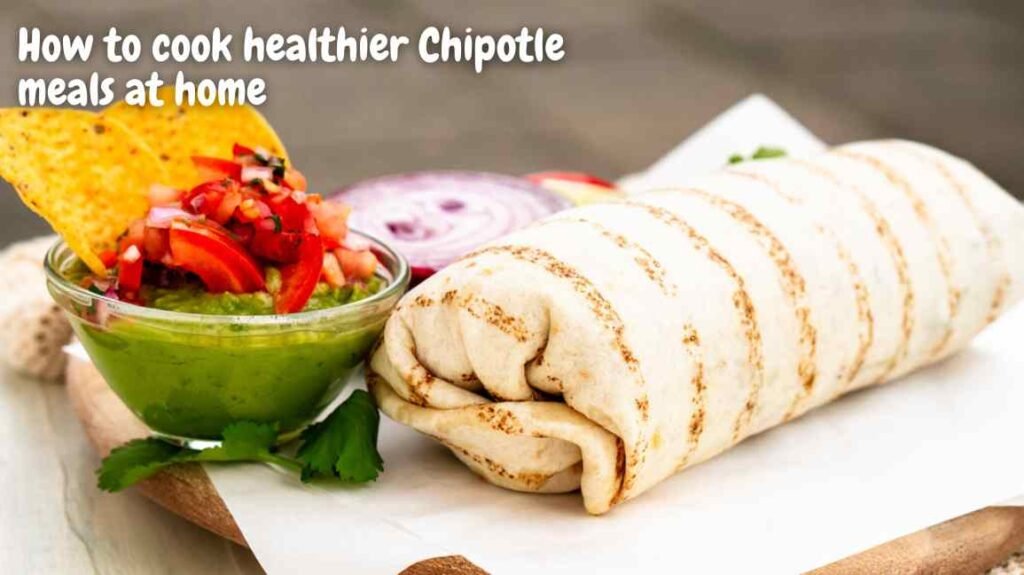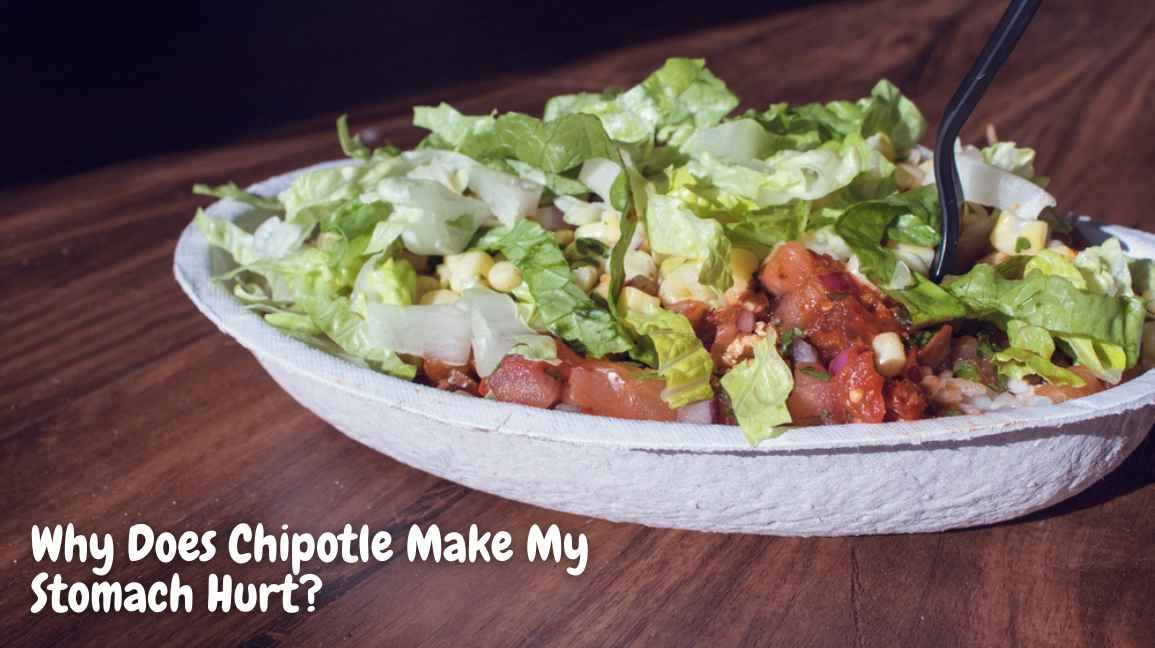Eating at Chipotle can be really enjoyable with its tasty menu. However, some people say their stomach feels upset after eating there.
This can be due to a variety of factors including ingredient sensitivities, food intolerances, and even the body’s reaction to specific spices and seasonings used in the dishes. Understanding why Chipotle makes your stomach hurt requires delving into the ingredients and preparation methods of their food, as well as considering personal dietary restrictions.
In today’s article, we will talk about why some people feel stomach pain after eating at Chipotle. This can be due to certain ingredients or food intolerances. We will also look at how spices and cooking methods might affect digestion and consider personal diets that could cause the problem.
What is Chipotle?
Chipotle is a fast-casual restaurant chain known for its Mexican-inspired cuisine, especially its burritos, bowls, tacos, and salads made to order with fresh ingredients.
The restaurant takes pride in using high-quality ingredients that are responsibly sourced. This includes meats without antibiotics, organic beans, and fresh vegetables. Chipotle shows its commitment to sustainability by supporting local farmers and careful sourcing practices.
However, despite the quality of the ingredients, certain items on the menu may provoke digestive discomfort in some people. This is due to the mix of ingredients like beans, dairy, and spicy salsas. Each one can cause different reactions, especially for people with sensitivities or intolerances.
Ingredients of Chipotle Dishes
Chipotle’s menu features an array of common ingredients that contribute to the diverse flavors and textures of their dishes. Some of the main ingredients include:
- Rice: Both cilantro-lime white rice and brown rice are available. These are seasoned with fresh cilantro, lime juice, and a blend of spices.
- Beans: Customers can choose between black beans and pinto beans, both of which are seasoned for rich flavor.
- Meats: Various types of protein are offered including chicken, steak, barbacoa, carnitas, and sofritas (a tofu-based option for vegetarians). These are marinated and cooked with a mix of spices.
- Vegetables: Fresh vegetables like sautéed peppers and onions (fajita veggies), lettuce, and tomato salsas are staples in Chipotle’s dishes.
- Cheese: Shredded Monterey Jack cheese is commonly used to add a creamy texture.
- Sour Cream: This is used as a tangy, cooling component to many dishes.
- Guacamole: Made from fresh avocados, lime juice, cilantro, red onion, jalapeños, and salt, guacamole adds a rich, creamy texture.
- Salsas: A variety of salsas are available, including fresh tomato salsa, green chili salsa, roasted chili-corn salsa, and tomatillo red-chili salsa.
- Tortillas: Flour tortillas for burritos and tacos, and crispy corn shells for tacos are offered to encase the ingredients.
- Chips: Corn tortilla chips seasoned with lime and salt are often served as a side.
Possible Reasons for Stomach Pain After Eating at Chipotle
There are a few potential reasons why Chipotle might cause stomach discomfort for some people:
- Food Intolerances: Many common ingredients at Chipotle, like dairy (cheese, sour cream) and gluten (flour tortillas), can cause discomfort for those with intolerances or allergies. Lactose intolerance, for example, can lead to bloating, gas, and diarrhea.
- High Fiber Content: Ingredients like beans, vegetables, and whole grains are high in fiber. For individuals not accustomed to high fiber intake, this can result in digestive issues like gas, bloating, and cramping.
- Spicy Foods: Chili peppers and other spices can irritate the stomach lining, especially for those unaccustomed to or sensitive to spicy foods. This can cause symptoms like burning sensations, stomach cramps, and even acid reflux.
- Large Portions: Chipotle is known for generous portion sizes. Eating large amounts of food in one sitting can overwhelm the digestive system, leading to discomfort and bloating.
- High Fat Content: Certain menu items, particularly those that include cheese, sour cream, and fatty meats, are high in fat. High-fat meals can slow digestion and trigger indigestion or discomfort in some people.
- Cross-Contamination: For people with severe allergies, mixing of allergens can be a worry. Even if you avoid certain ingredients, there is a chance of accidental contact, which can cause bad reactions.
- Food Additives: While Chipotle focuses on fresh and simple ingredients, some items might have preservatives or additives that can cause reactions in sensitive people. For example, some people might react to the preservatives in tortillas or spices.
- Bacterial Contamination: Although rare, foodborne illnesses from bacterial contamination can cause significant stomach discomfort. Symptoms can range from nausea and vomiting to severe stomach cramps and diarrhea.
Understanding these potential factors can help in making informed choices at Chipotle to minimize the risk of digestive discomfort.
Related: Do Fig Newtons Make You Poop? Facts about Fig Newtons
How to Identify the Problem
Finding out why your stomach hurts after eating at Chipotle needs a step-by-step approach. Here are some steps that can help find the problem:
- Keep a Food Diary: Write down everything you eat at Chipotle and any symptoms you notice afterward. Note the ingredients in your order to see if any patterns show up.
- Think About Allergies and Intolerances: It might be a good idea to get tested for common food allergies and intolerances. Lactose intolerance, celiac disease (gluten sensitivity), or allergies to things like soy or nuts could be causing the problem.
- Watch Your Portion Sizes: Pay attention to whether your symptoms get worse with larger portions. Try eating smaller amounts and see if that helps.
- Tone Down the Spice: If you think spicy foods might be the issue, try ordering your meals with milder spices and salsas. Slowly reintroduce spice to figure out your tolerance level.
- Go for Simpler Dishes: Start with basic ingredients and gradually add more to your meal. This can help you figure out which ingredient might be causing the issue.
- Stay Hydrated: Make sure to drink plenty of water, especially when eating high-fiber meals. Staying hydrated can help with digestion and prevent issues.
- Get Professional Help: If your symptoms don’t go away despite changing your diet, it’s a good idea to consult a healthcare professional. A gastroenterologist can run tests and give you a more specific diagnosis.
By taking these steps and paying close attention to your body’s reactions, you can better identify and manage any food-related digestive discomfort.
Also Read: Is Knorr Rice Healthy or Not? Unveil the Truth
Tips for Avoiding Stomach Discomfort
To reduce the risk of experiencing stomach discomfort after eating at Chipotle, consider the following tips:
- Customize Your Order: Chipotle gives you lots of options, so pick ingredients you know you can handle and skip the ones that give you trouble.
- Opt for Low-Fat Options: Go for lean proteins like chicken or sofritas, and pass on high-fat goodies like cheese and sour cream to avoid slow digestion and discomfort.
- Balance Fiber Intake: If you’re not used to high-fiber foods, ease into it. Mix beans and veggies instead of piling on all the high-fiber stuff at once.
- Watch the Spice Level: If spicy foods aren’t your thing, choose mild salsas and avoid the hot sauces. You can ask for them on the side to control how much you use.
- Portion Control: Manage your portions by getting a burrito bowl and asking for half servings of some ingredients. This way, you get a bit of everything without overloading your digestive system.
- Consider Probiotics: Adding probiotics to your diet can help keep your gut flora healthy, which is great if you often have digestive discomfort.
- Listen to Your Body: Finally, trust your gut—literally. Notice how different foods make you feel and adjust your orders based on that.
How to cook healthier Chipotle meals at home

Preparing healthier Chipotle-style meals at home allows you to have complete control over the ingredients and ensure that your meals are nutritious and tailored to your dietary needs. Here are some tips and recipes to get you started:
Choosing Fresh and Nutritious Ingredients
- Proteins: Opt for lean proteins like chicken breast, flank steak, or a plant-based option like tofu or beans. Marinate your meat in fresh herbs, citrus, and a small amount of olive oil to keep it flavorful without adding unnecessary fats.
- Grains: Use whole grains like brown rice or quinoa instead of white rice. These grains are high in fiber and nutrients which provides a sustained release of energy throughout the day.
- Vegetables: Load up on a variety of colorful vegetables, such as bell peppers, onions, tomatoes, and leafy greens. These add vital vitamins, minerals, and antioxidants to your meal.
- Healthy Fats: Add avocado for healthy monounsaturated fats and flavor. Use olive oil or avocado oil sparingly for cooking.
Recipes for Healthier Alternatives
Cilantro-Lime Brown Rice
Ingredients:
- 1 cup brown rice
- 2 cups water or low-sodium vegetable broth
- 1 lime, juiced
- 1/4 cup fresh cilantro, chopped
- 1 tbsp olive oil
- Salt to taste
Instructions:
- Rinse the brown rice under cold water.
- In a medium saucepan, combine the rice and water/broth. Bring to a boil, then reduce the heat to low, cover, and simmer for about 45 minutes, or until the rice is tender and water is absorbed.
- Remove from heat and let it sit, covered, for 10 minutes. Fluff with a fork.
- Stir in lime juice, chopped cilantro, olive oil, and salt. Mix well and serve.
Grilled Chicken
Ingredients:
- 2 boneless, skinless chicken breasts
- 1 lime, juiced
- 1 tsp chili powder
- 1 tsp ground cumin
- 1 tsp garlic powder
- 1/2 tsp paprika
- 1/2 tsp salt
- 2 tbsp olive oil
Instructions:
- Combine lime juice, chili powder, cumin, garlic powder, paprika, salt, and olive oil in a bowl. Mix well.
- Add the chicken breasts to the marinade and let sit for at least 30 minutes or overnight in the refrigerator for better flavor.
- Preheat the grill to medium-high heat.
- Grill the chicken for 6-7 minutes on each side, or until the internal temperature reaches 165°F (75°C).
- Let the chicken rest for a few minutes before slicing.
Assembling Your Bowl
- Start with a base of cilantro-lime brown rice.
- Add your grilled chicken or another lean protein.
- Pile on the veggies—think sautéed bell peppers, onions, corn, and fresh tomatoes.
- Add a scoop of beans for extra fiber and protein.
- Top with a dollop of homemade guacamole and some fresh salsa.
- Garnish with a sprinkle of fresh cilantro and a squeeze of lime.
By preparing your meals at home, you can enjoy the delicious flavors of Chipotle while ensuring that your meal is healthy and tailored to your specific dietary needs.
Conclusion
By following these tips and recipes, you can enjoy the vibrant and delicious flavors of Chipotle while maintaining a nutritious and balanced diet.
Taking control of your ingredients and preparations not only ensures your meals align with your dietary needs but also enhances your culinary skills. Embrace the opportunity to savor healthier, homemade Chipotle-style dishes that support your overall well-being.
Resources
- EatingWell: How to Order Healthy at Chipotle
- Healthline: Is Chipotle Healthy?

Hello Friends!
My name is Ahmad, reading books and gaining knowledge about Health, skin and their conditions is my passion and I am here to share my knowledge and experience with you. I hope it’s very helpful for you.
Thank you very much.
